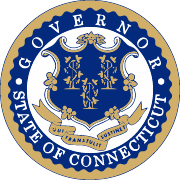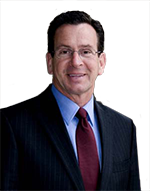Press Releases

04/22/2016
Gov. Malloy Applauds Connecticut Schools for Receiving Green Ribbon Honors from U.S. Department of Education
(HARTFORD, CT) - Governor Dannel P. Malloy today announced that three Connecticut schools are being recognized as 2016 honorees under the U.S. Department of Education's annual Green Ribbon Schools Program, including East Hartford's Two Rivers Magnet Middle School, Hartford's Two Rivers Magnet High School, and Stamford's King School.
Winning schools were honored for their efforts to reduce environmental impact and utility costs, improve health and wellness, and ensure effective sustainability education their campuses.
"We are making strides towards cleaner, greener ways of living, and the steps these Connecticut schools have taken are truly something to celebrate. It's a great honor for the students, their dedicated teachers and administrators, and all of us across the state," Governor Malloy said. "These schools are standing up to protect the environment and I'm thrilled they are being recognized nationally for their efforts."
Two Rivers Magnet Middle School started a composting program, installed a wind turbine, and is installing solar panels. At Two Rivers Magnet High School, students participated in sustainable design, water quality testing, and aquaponics courses. The private prekindergarten-12th-grade King School adopted a comprehensive sustainability plan that has improved building performance, reduced carbon emissions, increased use of locally sourced food, and more.
"Connecticut's young people are among the savviest of next generation environmentalists - it's imperative that our schools are leading efforts to curb pollution, improve efficiency, and reduce our overall impact on the planet," Lt. Governor Nancy Wyman said. "I applaud Connecticut's 2016 Green Ribbon schools for protecting our environment today and setting us on a course towards a more sustainable future."
"Congratulations to these three schools for combining environmental stewardship, academics, and so many other important lessons about sustainability, health, and wellness into their educational programs," Education Commissioner Dianna R. Wentzell said. "The opportunity for students to study and grow in this type of learning environment sets an excellent example of how to be a global citizen while making a difference in their lives and the lives of others here at home."
In total, 47 schools and 15 districts across the country were honored for their innovative efforts to reduce environmental impact and utility costs, improve health and wellness, and ensure effective sustainability education. U.S. Secretary of Education John King and Managing Director of the White House Council on Environmental Quality Christy Goldfuss made the announcement today in Washington, D.C.
Through a variety of programs and policy commitments, the State of Connecticut has been a national leader in efforts to reduce carbon emissions. In 2008, the state adopted the Global Warming Solutions Act, which committed the state to reducing carbon emissions by 80 percent from 2001 levels by 2050. That act contained an interim goal of a 10 percent reduction from 1990 levels by 2020, which was achieved in 2012 - eight years ahead of schedule. During that same period, Connecticut's population grew nine percent and the economy grew 41 percent.
Other carbon emission policy commitments and programs in the state include:
- Climate leadership through RGGI: Connecticut is a founding member of the Regional Greenhouse Gas Initiative (RGGI), the nation's first market-based, regulatory, cap-and-trade programs to reduce emissions from large fossil fuel burning power plants in the Northeast. Emissions from the power sector in Connecticut have declined by 34 percent from 1990 to 2012.
- A clear focus on energy efficiency: Connecticut has doubled its investment in cost-effective energy-saving initiatives. The lifetime energy savings achieved through efficiency programs in 2014 resulted in savings of fuel for heat and power that avoided emissions of 3.2 million tons of carbon dioxide equivalent - which is the same as removing more than 466,000 cars from the road.
- Deployment of renewables: With the support of innovative financing programs offered by the first-in-the-nation Connecticut Green Bank, Connecticut has seen a ten-fold increase in in-state renewables over the past three years. In addition, Connecticut has committed to purchasing power - for the first time - from regional grid-scale wind and solar projects, achieving significant savings for Connecticut ratepayers and staying on track to meet our goal of sourcing 20% of the state's electricity needs from Class I renewables by 2020.
- Supporting alternatives in transportation: As the transportation sector accounts for about 40 percent of the state's carbon emissions, Connecticut has been focused on highway improvements to speed the flow of traffic and reduce congestion, public transit projects that can lure people out of cars, and encouraging the sales and use of electric vehicles (EV). The state is funding a program of consumer rebates to make the cost of alternative vehicles more competitive and the build out of an EV charging station infrastructure to become the first "range confident" state in the nation.
- Twitter: @GovMalloyOffice
- Facebook: Office of Governor Dannel P. Malloy


